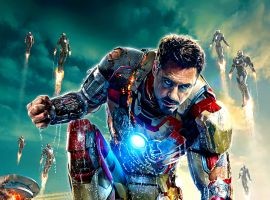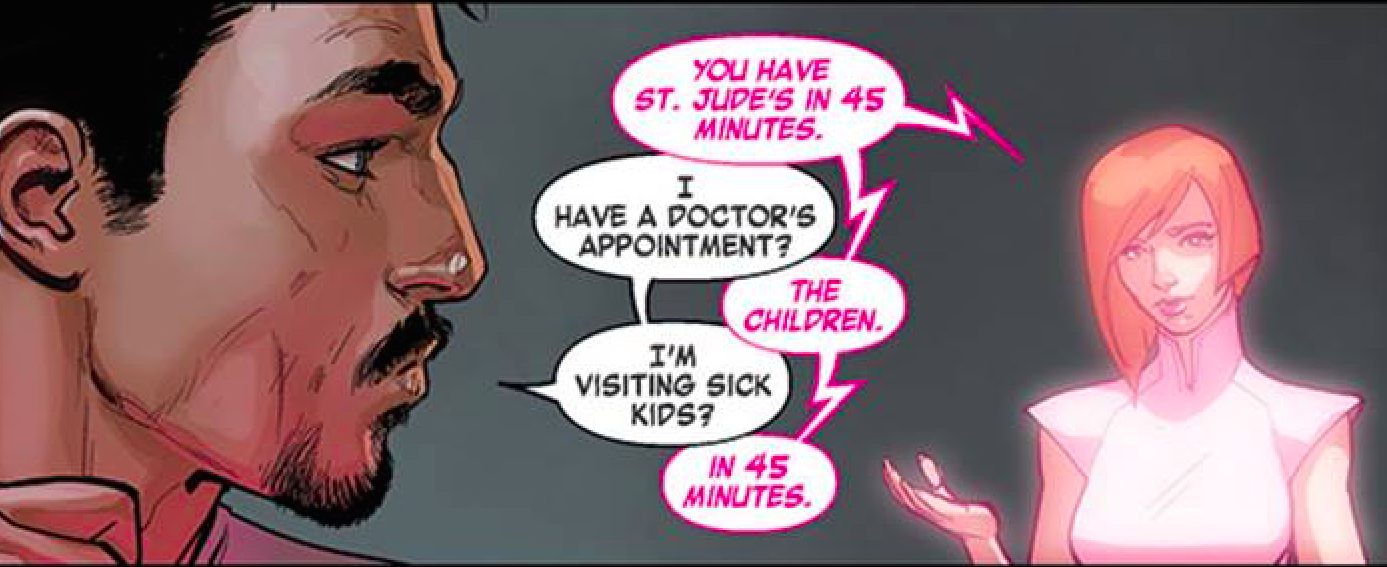Iron Man is the latest chapter in Marvel Comics’ — now also Marvel Studios’ — apparent attempt to give every character in its sprawling universe a big-screen vehicle. Conceptually, it would seem to be an iffy proposition. With the exception of hip-hop fans, for whom Iron Man alter ego Tony Stark has long been a cultural touchstone, the Iron Man character is not as familiar to general audiences as other Marvel page-to-screen subjects — X-Men, Fantastic Four, and the Incredible Hulk — much less the super-hero trinity of Superman, Batman, and Spider-Man.
Yet, out of this mix of second-tier source material, uninspiring director choice (actor-turned-filmmaker Jon Favreau), and risky lead actor (Robert Downey Jr.), Marvel has fashioned one of the very best of the recent spate of costumed-crusader blockbusters.
Like Nuke LaLoosh on the mound, Iron Man announces its presence with authority: A pre-credit sequence introduces us to weapons-industry “merchant of death” Stark as he rides along with a trio of U.S. soldiers in a Humvee (or, when Stark is a passenger, a “Funvee”) as part of a convoy through a dusty stretch of Afghanistan. Stark is a caustic, smirking presence, declining protective camo for an expensive suit-and-sunglasses combo while he swills scotch and banters with soldiers.
Ambushed, Stark comes to in the sand, one of his own “Stark Industries” shells at his side and his G.I. companions slaughtered. Soon, he’s hauled into a cave, tied up, surrounded by masked and hooded Arab captors, and propped in front of a video camera. Stark looks ahead, dazed, and the “Iron Man” title thunders across the screen. It’s a snazzy, sardonic, decidedly adult opener. And it sets the tone for the surprising movie that follows.
A PG-13 rating has become standard for recent super-hero movies, but even then Iron Man is a bit more grown-up than the Spider-Man and Fantastic Four franchises. Stark is a bad boy who boozes and carouses unapologetically, bedding a hot muckraking reporter the night before partying with scantily clad flight attendants on his private jet en route to a weapons demonstration a world away. (“I got caught doing a piece for Vanity Fair,” Stark cracks to a companion to explain his tardiness.)
Downey is an inspiring choice to play Stark, managing to convey the character’s witty, boozy irresponsibility; his surly, suffer-no-fools braininess; and, most surprisingly, his physicality. Director Favreau, who brings surprising flair to the enterprise, makes thorough use of this entertaining lead performance, recognizing that Stark is a lot more interesting outside his suit than in it and keeping most of the film focused on that side of the character’s dual personality.
Unlike Spider-Man, which loses interest when the costume comes on and the audience is left watching a personality-free computer blip fly across the screen, Iron Man focuses on Stark even during action scenes. Favreau crosscuts action seen from the outside to a behind-the-mask perspective, the camera framed tight on Stark’s face, the voice-activated computer-screen controls that pilot the Iron Man gear reflected across his eyes.
Iron Man is also well-cast around the margins: Jeff Bridges devours scenery with gusto as Lex Luthor-like business partner/potential villain Obadiah Stane; Gwyneth Paltrow gives a lovely, melancholy turn as Stark assistant Pepper Pots; and Hustle & Flow‘s Terrence Howard brings some weight to a barely written role as Stark military confidant James Rhodes.
If Iron Man has a flaw, it’s one that is typical of the genre and perhaps unavoidable: The climactic action scenes — all noise and rapid movement and explosions — are considerably less engaging than the character development and superhero-origin-story plot mechanics that have come before.
Iron Man
Now playing
Multiple locations


